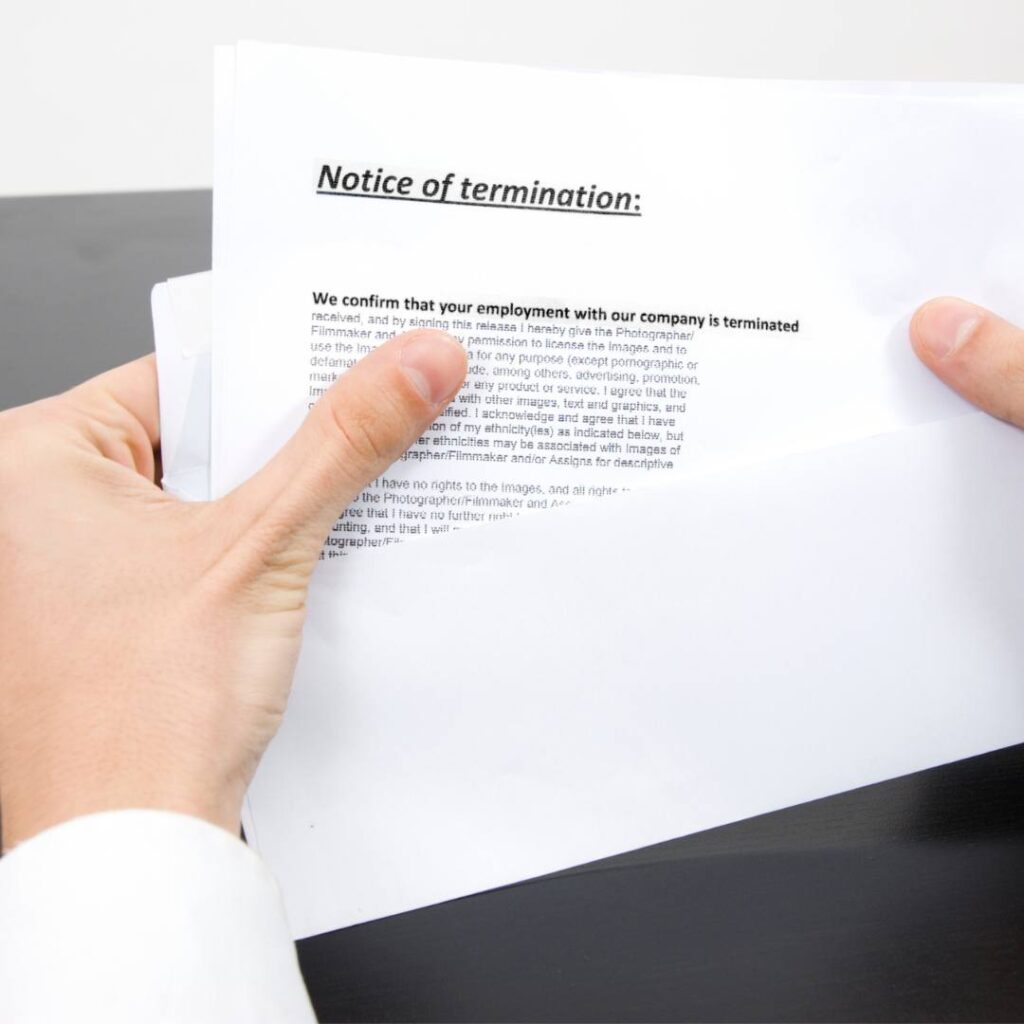
4 Ways to Make Terminations Less Stressful
September 14, 2022
Nothing you can do will make terminations entirely stress free. But terminations are often far more challenging than they need to be. Good preparation and the right attitude will make a big difference. Here are four general practices we do recommend:
1. Know Your Compliance Obligations Ahead of Time
Look up applicable laws regarding termination procedures and paperwork, accrued paid leave, severance pay, COBRA, and final paychecks before conducting a termination meeting. If you’re laying off a number of employees, you may have specific notice obligations under the federal Worker Adjustment and Retraining Notification Act (WARN) or a similar state law. You don’t want to miss any steps or deadlines. If the employee works in a different state, refer to that state’s laws.

You should also understand how antidiscrimination laws work in practice and take steps
to reduce the likelihood that the terminated employee will file a discrimination claim.
While at-will employment allows either the employer or the employee to terminate the
employment relationship at any time, with or without notice and with or without cause, it
does not permit you to terminate employment based on the employee belonging to a
protected class (e.g., race, sex, religion, national origin).
There’s even some risk when the termination is for cause. A terminated employee could
claim your reasoning is just for show, and they were actually terminated for an illegal
reason. That risk grows exponentially when you don’t provide the employee with a
sensible reason for the termination or when you’ve been inconsistent in applying your
discipline policies.
Consequently, the safest way to terminate employees is to communicate performance
issues to them, give them a chance to improve, and have documentation that justifies
the legitimate business reasons behind the termination. This documentation would
include policy violations, instances of poor performance, and any disciplinary or
corrective action taken. The documentation should indicate that the company
communicated the issues to the employee. The more you can do to show you had a
legitimate business reason and gave them an opportunity to improve, the harder it will
be for an employee to fill in the blank with their own illegal reason for termination. The
termination will be less risky, and you’ll feel better about the decision because you
treated the employee fairly.
2. Approach Terminations with a Positive Mindset
Painful as they are, terminations can be a good thing. Yes, even for the terminated
employee. Let’s say you have an employee who’s continually struggled to meet your
performance expectations. Guidance and training haven’t proven fruitful. No amount of
coaching has or would enable them to do the job better. There’s no other job in your
organization they could do. So now you have a choice. You can keep them on,
tolerating subpar performance and accepting its consequences for your organization, or
you can let them go. In this case, letting them go is probably the better option for both
parties.
Be prepared for strong emotions like sadness and anger to surface during the
termination meeting so that you can respond with confidence. While there’s a fine line
between allowing space for initial processing and unnecessarily prolonging the meeting,
you can acknowledge and validate the employee’s feelings without changing the end
result. Although escalations into violence are rare, review your company’s procedures
ahead of time for dealing with such situations.
3. Don’t Let Terminations Be a Surprise

Have you ever gotten an email from a boss saying something cryptic like “We need to
talk”? You may immediately begin to worry. Are you in trouble? Are you getting fired?
Until you have that talk, you can’t breathe a sigh of relief.
Why would your mind go there? It might be because you’re not clear on what could get
you into trouble at work and you don’t feel safe. Vague out-of-the-blue messages are
seldom a good idea. They’re a terrible practice when people believe that they could
realistically lose their job for reasons unknown to them. That belief puts people on edge,
inclining them to assume the worst when their manager reaches out without any
context. Surprise terminations encourage everyone to adopt that belief and incentivize a
culture of fear.
Terminations should never be a complete surprise. Yes, at-will employment allows you
to terminate employment for any reason or no reason at all (as long as it’s not an illegal
reason), but please don’t fire someone for any reason or no reason at all.
Clear rules and consistent practices are your friends here. Inform employees what’s
expected of them and what could result in their dismissal—the employee handbook is a
good place to do this. Enforce your rules consistently, not willy-nilly. If you let
employees get away with policy violations, but then suddenly switch to strict
enforcement, you’ll only create confusion and fear. You don’t need to follow the same
process for every kind of offense—some behaviors may warrant immediate termination,
for example. But don’t bend the rules for some employees and not others.
4. Stay Organized
Develop a checklist ahead of time of things that need to be covered. This list might
include specific equipment and keys that need to be returned, passwords and access
cards that will need to be disabled, coverage of the employee’s workload until a
replacement is hired, notification to coworkers, vendors, and customers, COBRA
information, a current address for W-2s, and what you’re going to say during the
termination meeting.
Checking off boxes may feel impersonal, but the day of a termination is at the very least
challenging for all involved, and at the worst chaotic, especially if you’re disorganized.
Keeping the process smooth and orderly is both kind and professional.
